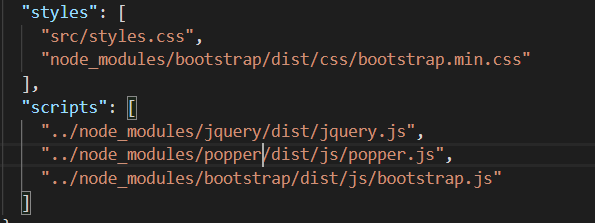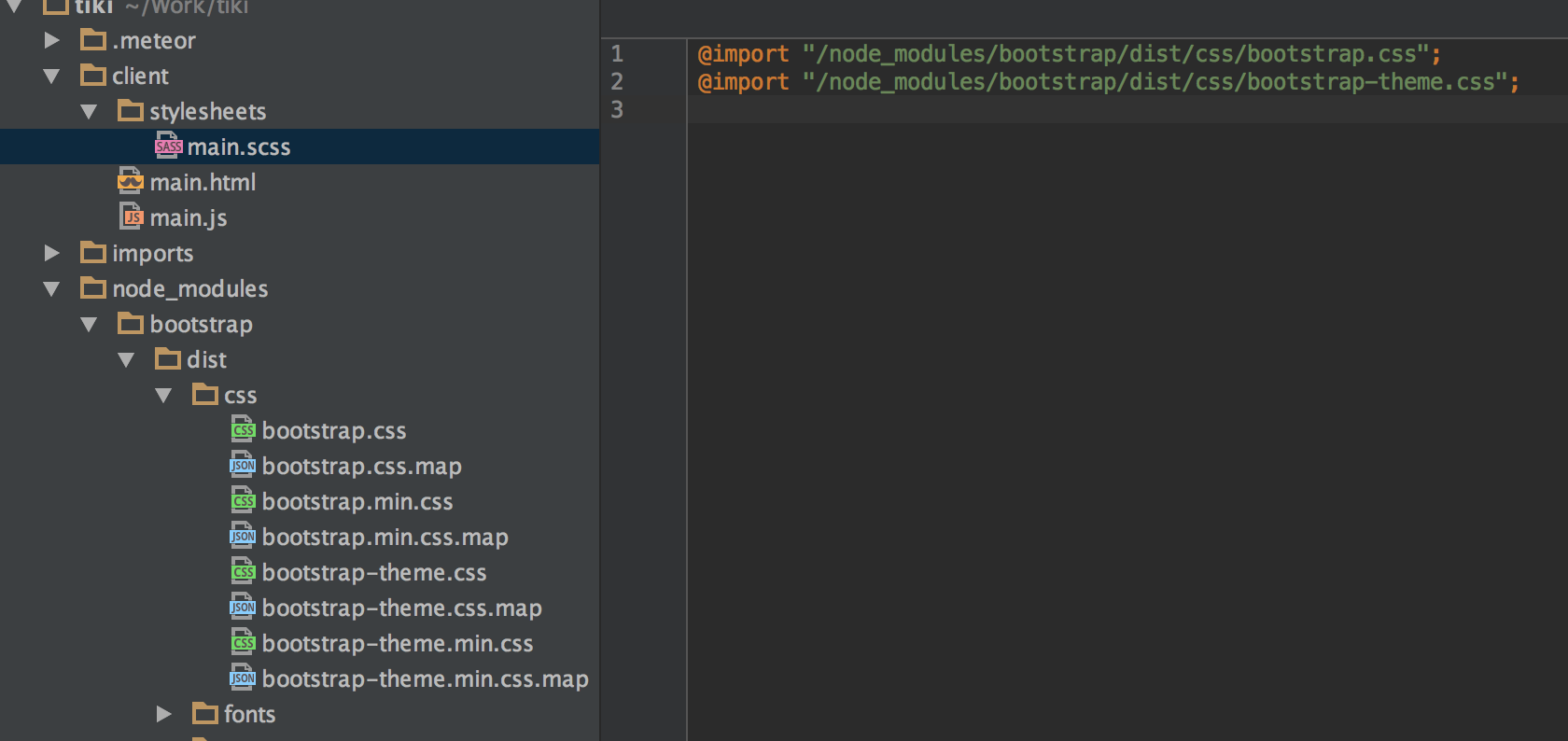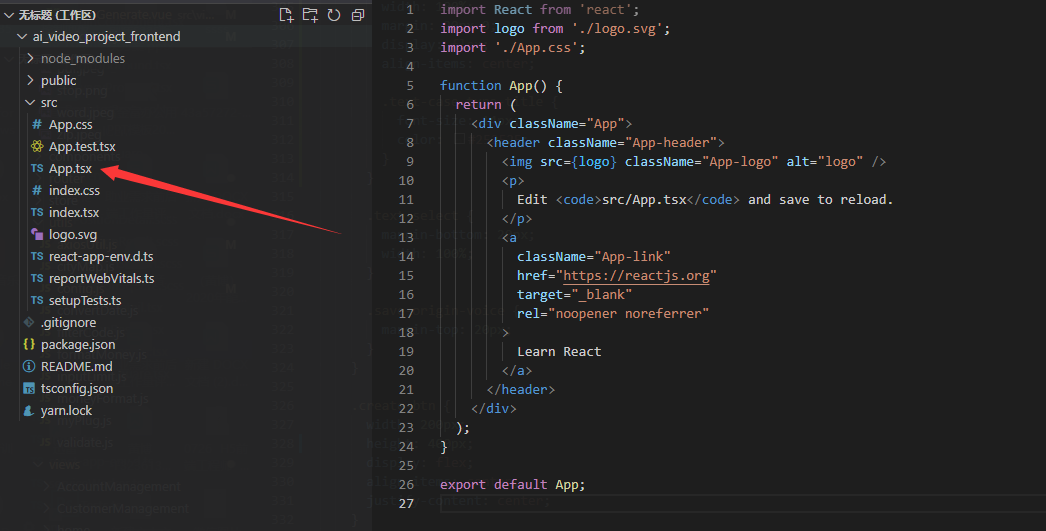Scss Import From Node_Modules
1. What is SCSS import from node_modules?
SCSS import from node_modules allows developers to seamlessly integrate third-party SCSS files into their projects by leveraging the power of package managers like npm or yarn. It enables the import of SCSS files directly from the “node_modules” directory, allowing for code reuse, easy maintenance, and convenient customization of external stylesheets.
2. Why import SCSS from node_modules?
Importing SCSS from node_modules offers several advantages. Firstly, it promotes code modularity and reusability, as developers can import stylesheets that are already optimized and well-maintained by others, reducing the need to reinvent the wheel. Additionally, it simplifies the management of CSS dependencies, making it easier to update and customize external stylesheets without modifying the original files directly.
3. Setting up a SCSS project with node_modules import
To set up a SCSS project with node_modules import, follow these steps:
Step 1: Initialize a new project using a package manager like npm or yarn.
Step 2: Install the necessary dependencies, including the SCSS compiler (e.g., node-sass).
Step 3: Create a project directory structure, including a folder for SCSS files (e.g., “src/scss”) and a package.json file.
Step 4: Configure your build process or task runner to compile SCSS files into CSS.
Step 5: Import SCSS files from node_modules using the appropriate syntax (explained in the next section).
4. Importing SCSS files from node_modules
To import SCSS files from node_modules, use the `@import` rule followed by the path to the desired file within the package. The path should start with “~” to indicate the import is from node_modules. For example:
“`scss
@import ‘~package-name/path/to/file’;
“`
This allows you to import SCSS files from installed packages and leverage their styles within your project.
5. Handling conflicts while importing SCSS from node_modules
Conflicts may arise when importing SCSS files from different packages, especially if they define conflicting CSS classes or variables. To handle these conflicts, consider using SCSS features like namespacing or scoping. Namespacing involves prefixing class names and variable names with a unique identifier, ensuring uniqueness across different packages. Alternatively, you can use scoping by encapsulating imported styles within specific selectors to prevent clashes.
6. Customizing imported SCSS files from node_modules
To customize imported SCSS files from node_modules, create a separate SCSS file in your project and import the desired package file within it. Then, override specific styles or variables as needed. By placing the customization file after the package import in the build process, your modifications will take precedence over the original styles.
7. Tips for efficient SCSS import from node_modules
Here are a few tips to ensure efficient SCSS import from node_modules:
– Only import the necessary SCSS files to minimize your project’s size.
– Regularly update your packages to benefit from bug fixes and new features.
– Leverage SCSS mixins and extends for better code organization and reusability.
– Optimize your build process to eliminate redundant or unused styles.
– Document the imported styles and their modifications to facilitate future maintenance.
8. Potential challenges and considerations when using SCSS import from node_modules
Although SCSS import from node_modules offers great flexibility and productivity, there are a few challenges and considerations to keep in mind:
– Ensure that the imported packages are actively maintained to avoid compatibility issues or deprecated code.
– Handle different import syntaxes depending on the SCSS compiler or bundler used.
– Be mindful of the project’s overall file size – importing excessive stylesheets can result in slower build times and increased network overhead.
– Understand any licensing restrictions on the imported SCSS files, particularly for commercial projects.
FAQs:
Q1: Can I import CSS files from node_modules as well?
Yes, you can import CSS files from node_modules in the same manner as SCSS files. However, note that importing CSS files won’t provide the benefits of SCSS, such as variables, mixins, or nesting.
Q2: Can I import SCSS files from different versions of the same package?
Importing SCSS files from different versions of the same package can lead to compatibility issues and conflicts. It is generally recommended to stick to a single version across your project to ensure consistent styling.
Q3: How can I override styles from an imported SCSS file?
To override specific styles from an imported SCSS file, create a new SCSS file in your project and import the package file. Then, redefine the desired styles within this new file, customizing them according to your requirements. Remember to import this customization file after the package import in your build process.
Q4: Can I import SCSS files from my project’s local directory instead of node_modules?
Yes, you can import SCSS files from your project’s local directory. However, importing from node_modules provides the advantage of easily managing external dependencies and leveraging pre-optimized stylesheets.
Q5: Are there any performance implications when using SCSS import from node_modules?
Using SCSS import from node_modules itself doesn’t directly affect performance. However, importing excessive stylesheets can result in larger file sizes, leading to slower build times and increased network overhead. It’s important to only import the necessary styles and optimize your build process accordingly.
In conclusion, SCSS import from node_modules streamlines CSS customization and promotes code reusability. By efficiently integrating third-party stylesheets into your projects, you can save time and effort while creating consistent and maintainable styles. Remember to keep best practices in mind, handle conflicts carefully, and optimize your usage to leverage the full potential of SCSS import from node_modules.
Install Sass Để Dùng Scss?
Can I Import Scss In Css?
CSS (Cascading Style Sheets) is a style sheet language used to describe the look and formatting of a document written in HTML (Hypertext Markup Language). On the other hand, SCSS (Sassy CSS) is a superset of CSS that adds powerful features and enhancements to the traditional CSS syntax. As SCSS provides a more flexible and efficient way to write CSS, it is no wonder that many developers want to import SCSS into their CSS files. So, the question arises: can you import SCSS in CSS? Let’s delve deeper into this topic to find out.
Firstly, it’s important to understand the key differences between SCSS and CSS. SCSS is a preprocessor, which means it needs to be compiled into CSS before it can be used by web browsers. On the other hand, CSS is the standard style sheet language understood by web browsers. This fundamental difference implies that importing SCSS directly into a CSS file is not possible natively. However, there are ways to achieve a similar outcome.
One way to simulate importing SCSS in CSS is by using a build tool or a task runner like Gulp, Grunt, or Webpack. These tools allow you to compile SCSS into CSS and concatenate your CSS files into a single file. By doing so, you can establish a workflow where your CSS files, including SCSS imports, are compiled into a final CSS file that can be used in your web project.
To set up this kind of workflow, you will need to install the necessary dependencies and configure the build tool according to your project’s needs. Once you’ve done that, you can start importing SCSS files into your CSS by either using the `@import` rule or importing them via JavaScript modules. The `@import` rule helps import the SCSS files directly into your main SCSS file, which will eventually be compiled to CSS. Alternatively, using a JavaScript module approach allows you to import SCSS files dynamically when needed.
Another method to utilize SCSS in CSS is by converting SCSS files to CSS manually. In this case, you have to undergo the process of manually copying the content of SCSS files and pasting it into your CSS file. While this approach offers more control over the final CSS output, it can be time-consuming and less efficient, particularly when working on larger projects with frequent changes in the source SCSS files.
To conclude, while importing SCSS directly into a CSS file is not possible, there are workarounds to achieve a similar outcome. By using build tools or converting SCSS files to CSS manually, you can incorporate SCSS code into your CSS files. These techniques not only allow you to take advantage of SCSS’s powerful features but also enhance your workflow and maintainability of your code.
FAQs:
Q: Can I import SCSS files into HTML directly?
A: No, CSS is the language used to style HTML elements directly in the browser. SCSS files need to be compiled into CSS before they can be used in HTML.
Q: Is there an alternative to importing SCSS in CSS?
A: Yes, you can use the `link` tag in HTML to directly include the compiled CSS file or utilize the `@import` rule in your SCSS files if you’re using a build tool.
Q: Are there any advantages of using SCSS over traditional CSS?
A: Yes, SCSS provides numerous advantages such as nested rules, variables, mixins, inheritance, and modular code structure. These features make writing and maintaining CSS code easier and more efficient.
Q: Does importing SCSS affect performance?
A: Importing SCSS files into CSS has minimal impact on performance if done correctly. However, importing unnecessary SCSS files or using excessive nesting can lead to bloated CSS files, which might affect page load speed.
Q: Can I import CSS into SCSS?
A: While you cannot directly import CSS into SCSS files, you can use the `@import` rule in SCSS to import compiled CSS files. It enables you to utilize third-party CSS libraries and combine them with your SCSS code.
In conclusion, while importing SCSS files directly into CSS is not possible, there are methods available to simulate this behavior. By using build tools or manual conversion, developers can incorporate SCSS code into their CSS files and leverage the advantages offered by SCSS. It is essential to choose the most suitable approach based on the project requirements, as it can significantly impact the maintainability and efficiency of your code.
How To Compile Scss To Css In Node?
SCSS (Sassy CSS) is a powerful extension of CSS that allows for nesting, variables, mixins, and more, making it easier and more efficient to write and maintain CSS stylesheets. To translate SCSS code into regular CSS, it must be compiled. Node.js provides an effective platform for developers to compile SCSS to CSS, enabling them to streamline their build process. In this article, we will dive deep into the topic of compiling SCSS to CSS in Node, exploring various methods and tools available.
Getting Started:
Before we begin, make sure that you have Node.js installed on your machine. If you haven’t, head over to the official Node.js website and download the latest version suitable for your operating system.
Method 1: Using node-sass:
One popular tool for compiling SCSS to CSS in Node is node-sass. It is a Node.js library that allows you to directly integrate SCSS compilation into your build process. To start, open your terminal or command prompt and create a new empty directory.
1. Initialize a new Node.js project by running `npm init` inside the directory. Follow the on-screen prompts to set up the project.
2. Install node-sass as a development dependency by running `npm install node-sass –save-dev`.
3. Once installed, create a new file called `styles.scss` in the project directory. Add your SCSS code inside this file.
4. Create another file called `index.js` in the same directory. This file will contain the code to compile SCSS to CSS using node-sass.
5. Inside `index.js`, add the following code:
“`javascript
const sass = require(‘node-sass’);
const fs = require(‘fs’);
sass.render({
file: ‘styles.scss’,
outputStyle: ‘compressed’ // or ‘expanded’ for unminified CSS
}, function(error, result) {
if(!error){
fs.writeFile(‘styles.css’, result.css, function(err){
if(!err){
console.log(‘SCSS compiled to CSS successfully!’);
}
});
}
});
“`
6. Save the file and run `node index.js` in the terminal. If everything is set up correctly, the SCSS will be compiled, and a new file called `styles.css` will be generated in the same directory.
Now you can link this compiled CSS file in your HTML to apply the styles to your website.
Method 2: Using Gulp:
Gulp is a widely-used JavaScript task runner that provides a more flexible and efficient way to automate repetitive tasks. It has extensive plugin support for various tasks, including SCSS compilation.
1. Install Gulp globally on your machine by running `npm install -g gulp-cli`.
2. In your project directory, run `npm init` to initialize a new Node.js project.
3. Install the necessary dependencies for Gulp SCSS compilation by running `npm install gulp gulp-sass –save-dev`.
4. Create a new file called `gulpfile.js` in the root of your project directory. This file will contain your Gulp tasks.
5. Inside `gulpfile.js`, add the following code:
“`javascript
const gulp = require(‘gulp’);
const sass = require(‘gulp-sass’);
gulp.task(‘compile-scss’, function() {
return gulp.src(‘styles.scss’)
.pipe(sass({ outputStyle: ‘compressed’ }).on(‘error’, sass.logError)) // or ‘expanded’ for unminified CSS
.pipe(gulp.dest(‘./’));
});
gulp.task(‘watch-scss’, function() {
gulp.watch(‘styles.scss’, gulp.series(‘compile-scss’));
});
“`
6. Save the file and run `gulp compile-scss` in the terminal. Gulp will compile the SCSS file and create `styles.css` in the same directory.
Additionally, you can run `gulp watch-scss` to enable continuous compilation of SCSS whenever changes are made in the `styles.scss` file.
FAQs:
Q: Can I compile multiple SCSS files into a single CSS file?
A: Yes, you can. Simply specify the multiple SCSS files in the `gulp.src()` method, separated by commas. For example:
“`javascript
gulp.src([‘styles1.scss’, ‘styles2.scss’])
“`
Q: How can I enable source maps for better debugging of CSS in my browser?
A: Both `node-sass` and `gulp-sass` provide options to generate source maps. You can enable them by passing `sourceMap: true` in the options object, like this:
“`javascript
return gulp.src(‘styles.scss’)
.pipe(sass({ outputStyle: ‘compressed’, sourceMap: true }))
…
“`
Q: Is there a way to include external libraries in my SCSS files?
A: Yes, you can use the `@import` directive in your stylesheets to include external SCSS files. For example:
“`scss
@import ‘path/to/external-styles.scss’;
“`
In conclusion, compiling SCSS to CSS in Node is a straightforward process, and there are multiple methods available to suit your preferences. Whether you choose `node-sass` or Gulp, both options offer powerful features and simplify the development workflow. Experiment with these methods, explore additional tools, and leverage the efficiency and flexibility SCSS provides to enhance your CSS development process.
Keywords searched by users: scss import from node_modules
Categories: Top 35 Scss Import From Node_Modules
See more here: nhanvietluanvan.com
Images related to the topic scss import from node_modules

Found 26 images related to scss import from node_modules theme






























Article link: scss import from node_modules.
Learn more about the topic scss import from node_modules.
- Importing Sass through npm – node.js – Stack Overflow
- Import a SCSS files from Node Modules – Laracasts
- Including css file from node_modules in scss – Hugo Discourse
- How to import scss file from node_modules | by Anna Coding
- Import a CSS file from node_modules in React – bobbyhadz
- SCSS cannot resolve imports (node_modules) in IDE – YouTrack
- Sass @import and Partials – W3Schools
- How to Add and Compile SCSS to Run Automatically in the … – Mishka
- CSS to SCSS Converter Online – Code Beautify
- SASS | Use variables across multiple files – GeeksforGeeks
See more: https://nhanvietluanvan.com/luat-hoc/